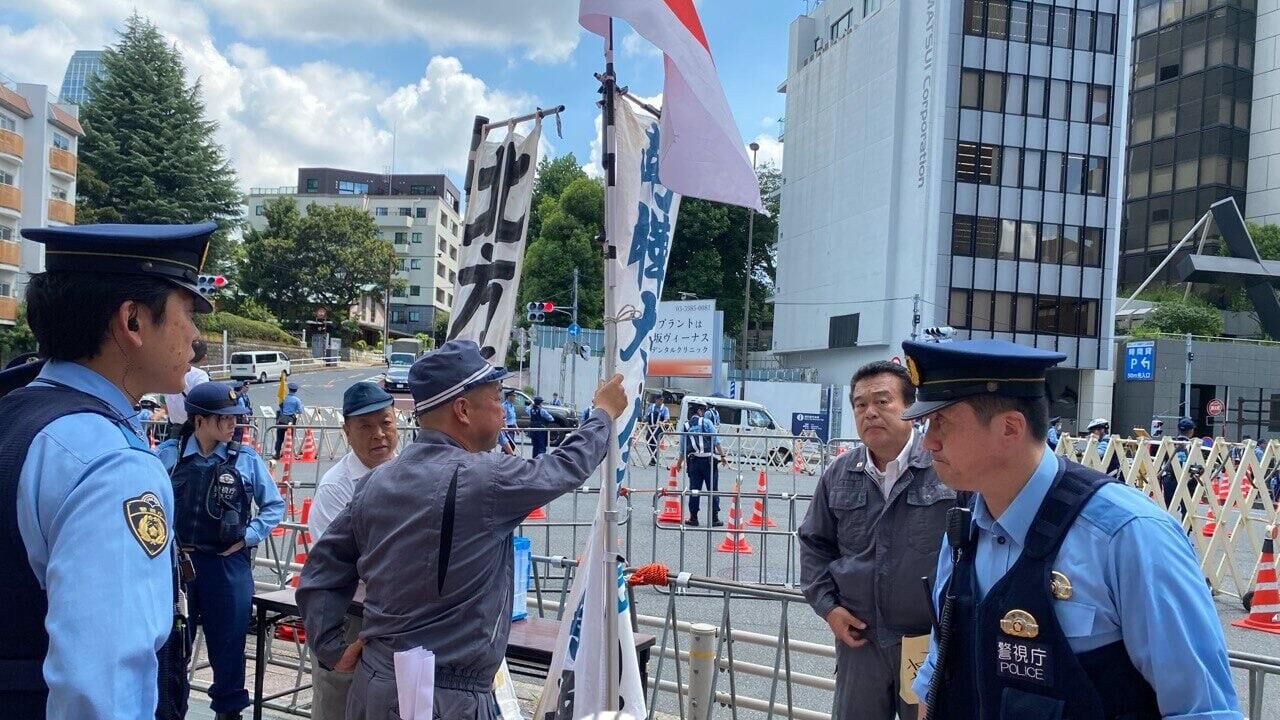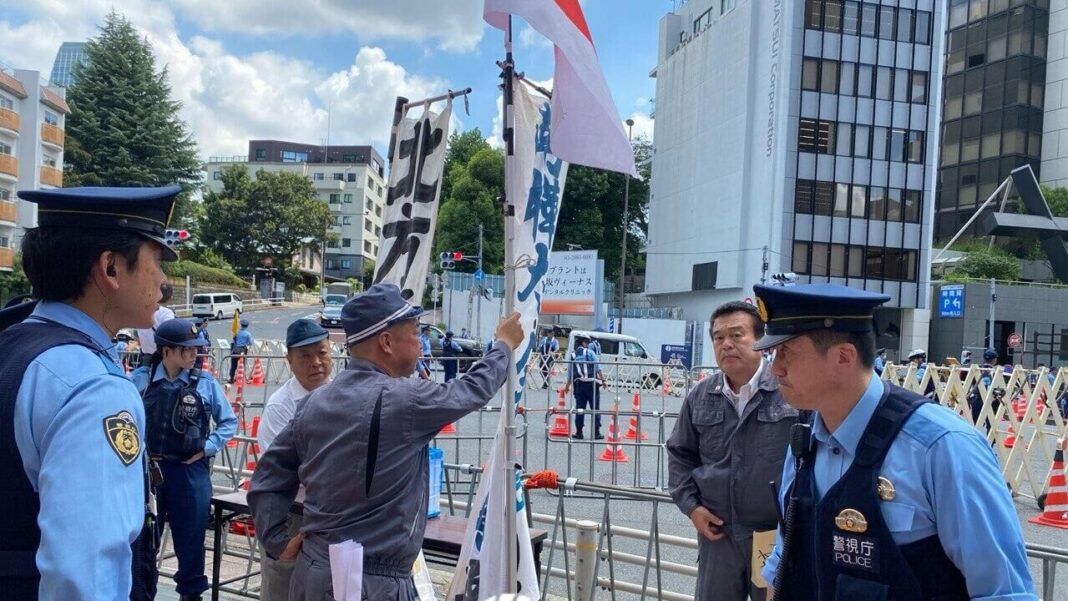
TOKYO, August 9, Ksenia Naka. Japanese ultra-right organizations are holding protests near the Russian embassy in Tokyo on the anniversary of the USSR's entry into the war against Japan on August 9, 1945, a correspondent reports from the scene.
When leaving the metro station closest to the embassy, a concentration of police is noticeable. Police buses are parked along the roadway, and officers are at intersections and do not allow ultra-right organizations' minibuses to turn toward the Russian diplomatic mission. They drive along neighboring streets and shout slogans into a megaphone.
If the volume level exceeds the norm, the vehicle is stopped. A correspondent witnessed such a minibus being stopped for excessive volume. Its driver tried to shout his displeasure into a megaphone that «why is this one and only embassy being guarded like this», but this demarche was quickly stopped.
Only three protesters with banners are allowed onto the street closest to the embassy, and in a tight ring of police to avoid provocations on their part, and in a ratio of approximately 1 to 5. They are allowed to stand on the opposite side from the embassy and, without megaphones, voice their complaints or read out a petition. Only one person is allowed into the embassy itself to hand over a petition.
Thus, three people were escorted by a police detachment to the opposite side of the road from the diplomatic mission, where they read out their demands from a piece of paper, after which one of them, again surrounded by a tight ring of police, proceeded to the embassy and handed over the petition.
Japanese ultra-right organizations, as a rule, time their actions to coincide with the so-called Northern Territories Day, as Kunashir, Iturup, Shikotan and Habomai are called in Japan, on February 7, and the anniversary of the USSR's entry into the war against Japan on August 9.
Relations between Russia and Japan have been clouded for many years by the absence of a peace treaty. In 1956, the USSR and Japan signed a Joint Declaration, in which Moscow agreed to consider the possibility of transferring Habomai and Shikotan to Japan after the conclusion of a peace treaty, and the fate of Kunashir and Iturup was not affected. The USSR hoped that the Joint Declaration would put an end to the dispute, while Japan considered the document only part of the solution to the problem, without giving up its claims to all the islands. Subsequent negotiations came to nothing, and a peace treaty at the end of World War II was never signed. Serious opposition arose from the United States, which threatened that if Japan agreed to transfer only two of the four islands to it, this would affect the process of returning Okinawa to Japanese sovereignty (the Agreement on the return of Okinawa to Japan came into force in 1972 — ed.). Moscow's position is that the islands became part of the USSR following the Second World War and the sovereignty of the Russian Federation over them is beyond doubt.


